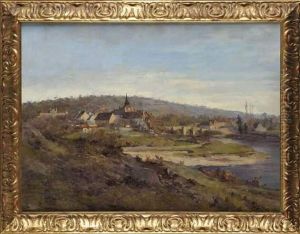Henri Jobard Paintings
Henri Jobard was a Belgian lithographer, inventor, and industrialist born in 1792 in Bouillon, Belgium. Not primarily renowned as an artist in the traditional sense, Jobard is better recognized for his contributions to the field of lithography and photography. Throughout his career, Jobard was deeply involved in the development of industrial processes and held a strong belief in the progress of science and technology.
In his early years, Jobard developed an interest in lithography, which was a relatively new printing technique invented at the end of the 18th century by Alois Senefelder. Jobard recognized the potential of this method for reproducing images and texts and became one of its early adopters in Belgium. He was known for his work in improving the lithographic process, and his efforts contributed to the popularization of lithography in the production of printed materials.
Beyond lithography, Jobard was fascinated by the emerging field of photography. He became one of the first people in Belgium to experiment with daguerreotype, the first commercially successful photographic process. His enthusiasm for new technologies extended to other areas as well; Jobard was a prolific inventor and received numerous patents for a variety of industrial applications, including improvements in steam engines, gas lighting, and other mechanical devices.
Henri Jobard was also an advocate for the protection of intellectual property rights. He pushed for the establishment of laws and regulations that would safeguard inventors and their inventions, which was a relatively novel concept at the time. His efforts in this area underscore his belief in the importance of innovation and the need to support the creators behind technological advancements.
Despite his technical and industrial focus, Jobard's contributions have a place in art history due to his involvement with the early days of photography and his efforts to improve the quality and accessibility of printed images through lithography. Henri Jobard passed away in 1862, leaving behind a legacy that bridges the worlds of art, technology, and industry.

